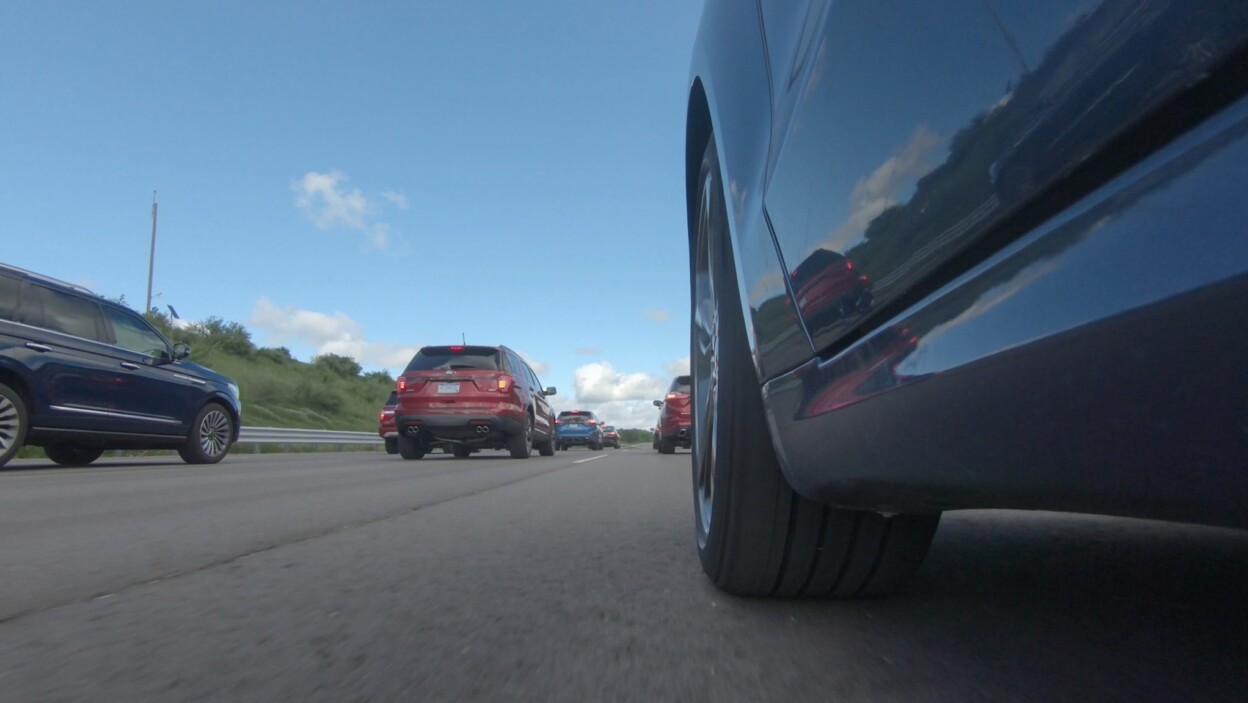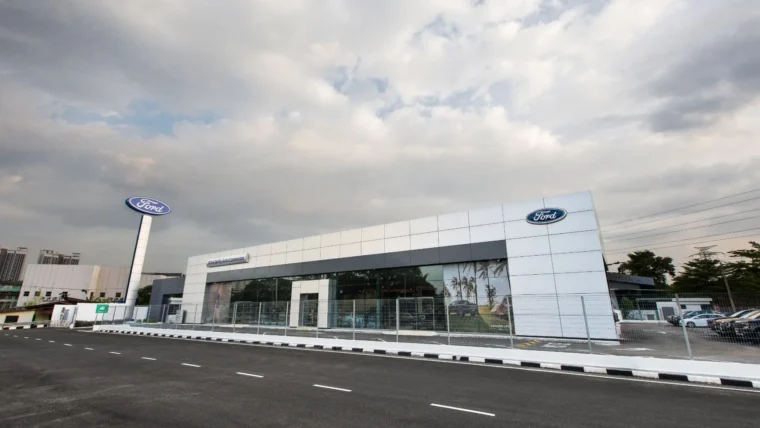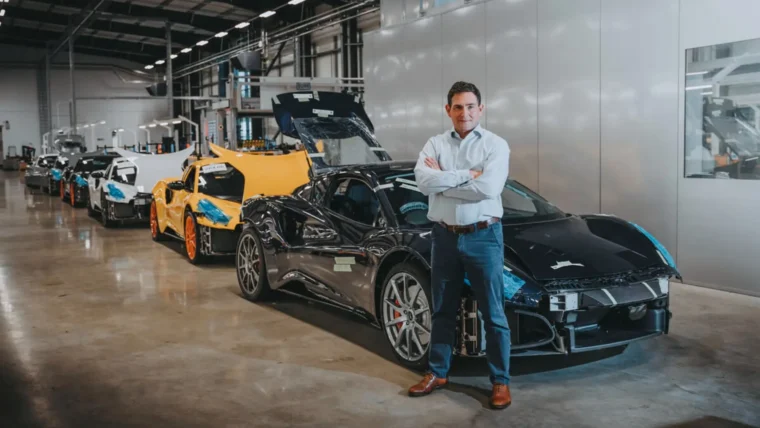Ford and Vanderbilt University researchers are demonstrating this week that so-called phantom traffic jams could be minimized with widespread use of adaptive cruise control available today in most Ford vehicles.
The team conducted what is believed to be the largest, most realistic demonstration of its kind, showing that existing technology could help minimize phantom traffic jams, which happen for seemingly no reason and can cause hazardous traffic backups.
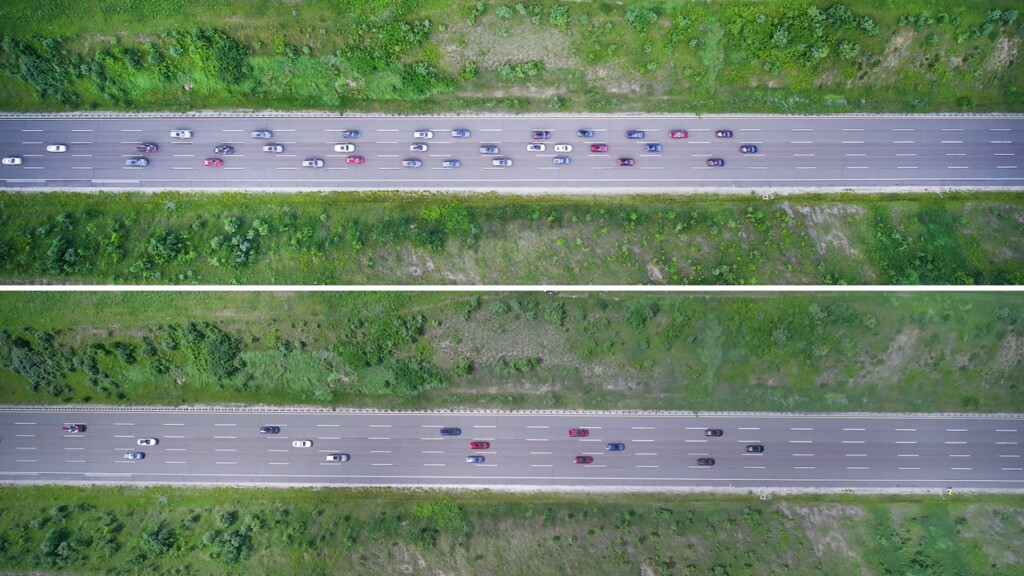
On a closed Ford test track, 36 drivers simulated normal highway traffic using adaptive cruise control, which can automatically slow down and speed up to keep pace with the car in front without getting fatigued or distracted. Those drivers then drove the same course, but without the technology – meaning they had to manually brake and accelerate the vehicle.
The results: vehicles using adaptive cruise control reduced the impact of a braking event more than those vehicles without the activated technology. Even with just one in three vehicles using adaptive cruise control, the test yielded similar traffic-busting benefits.
“A fun Fourth of July family road trip can quickly become irritating when traffic slows to a crawl – especially once you learn there was no reason for the gridlock,” said Michael Kane, supervisor, Ford Co-Pilot360 Technology. “We encourage Ford owners who have adaptive cruise control to use it during their summer travels in the hope this smart technology today can be that first step to help ease commutes.”
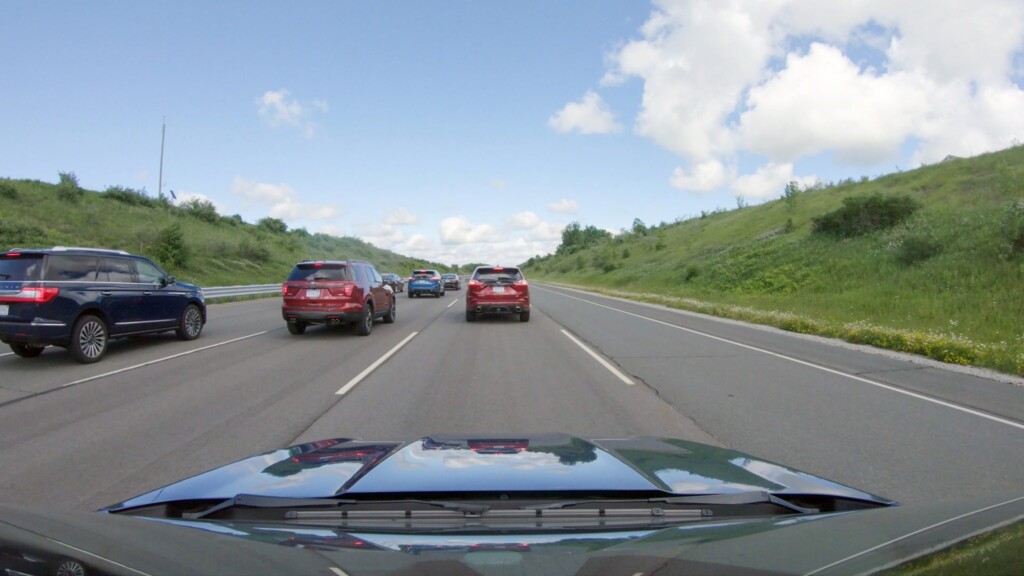
Ford currently offers adaptive cruise control on 71 percent of U.S. models.
“For years, traffic researchers and engineers have been looking to smart vehicle technologies to reduce traffic congestion, whether that’s vehicles that talk to each other or vehicles that can predict the road ahead,” said Daniel Work, civil engineering professor at Vanderbilt University. “This demonstration was a unique opportunity to understand how commercially-available active driver-assist technologies can be used to positively influence traffic flow.”
Work and lead PhD researcher, Raphael Stern, have been working with the support of the National Science Foundation to determine how smart technologies can provide a pathway to fewer traffic snarls – and reduced overall fuel consumption. They plan on publishing the results of the Ford demonstration in an upcoming academic journal.
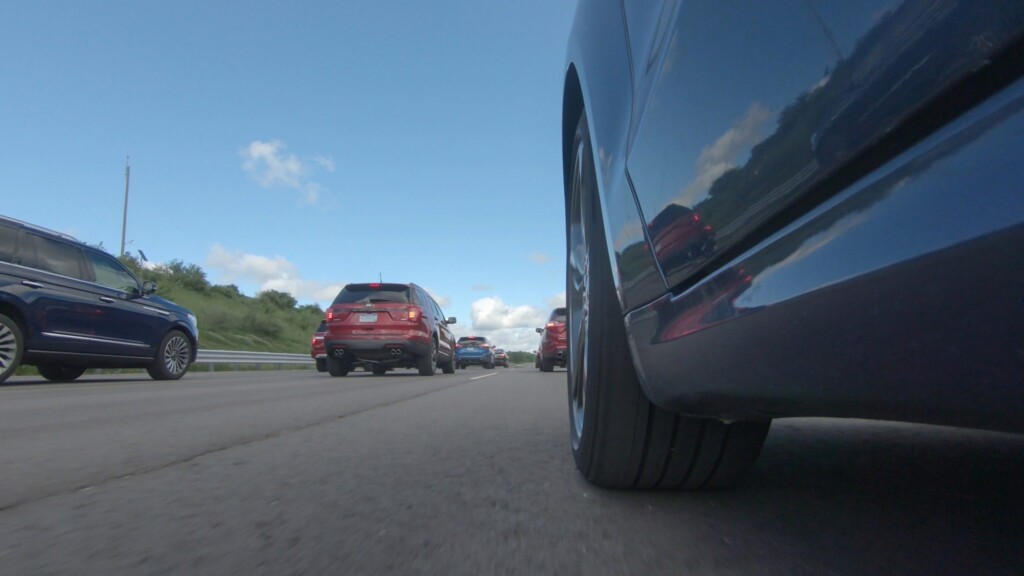
Curse of the phantom traffic jam
As with crashes, human factors – such as merging into traffic without signaling, distracted driving, poor driving habits and reaction times, or unnecessary braking – are the main causes of phantom traffic jams. Think of it like this: Once one driver hits the brakes, a chain reaction can occur as other drivers tap their brakes, causing the flow of traffic to halt.
“Unlike the traffic jams caused by accidents or road construction, phantom traffic jams appear out of nowhere,” Work said. “Combined, traffic backups cost the typical American commuter on average an additional 41 hours a year sitting in traffic at a cost of $1,400 per commuter.” These figures take into account lost productivity, fuel burned while idling and increased wear and tear.
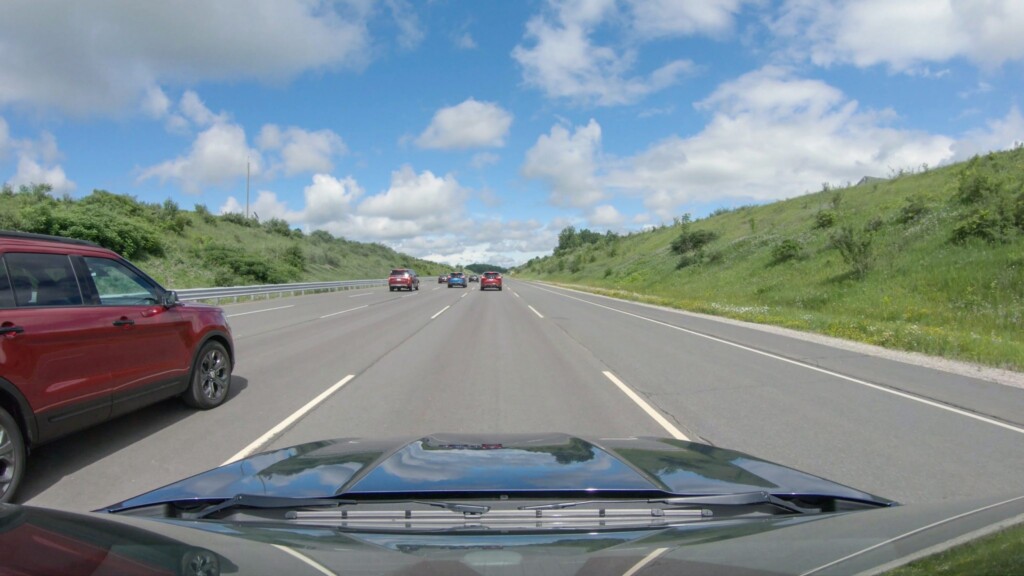
This year, the company is launching FordCo-Pilot360™, the most advanced suite of standard driver-assist technologies — a combination other non-luxury competitors don’t offer standard in North America — to help people navigate these challenging conditions.
Ford Co-Pilot360 includes standard automatic emergency braking with pedestrian detection, blind spot information system, lane keeping system, rear backup camera and auto high-beam headlamps. The new 2019 Edge is Ford’s first vehicle to offer adaptive cruise control with new lane centering technology, providing support on long road trips by helping keep the vehicle centered in its lane.
Ford’s adaptive cruise control technology – originally introduced in 2006 – has been consistently enhanced to help in a variety of conditions across the company’s cars, trucks and SUVs – like being specially tuned to work for F-Series F-150 and Super Duty customers who tow boats.
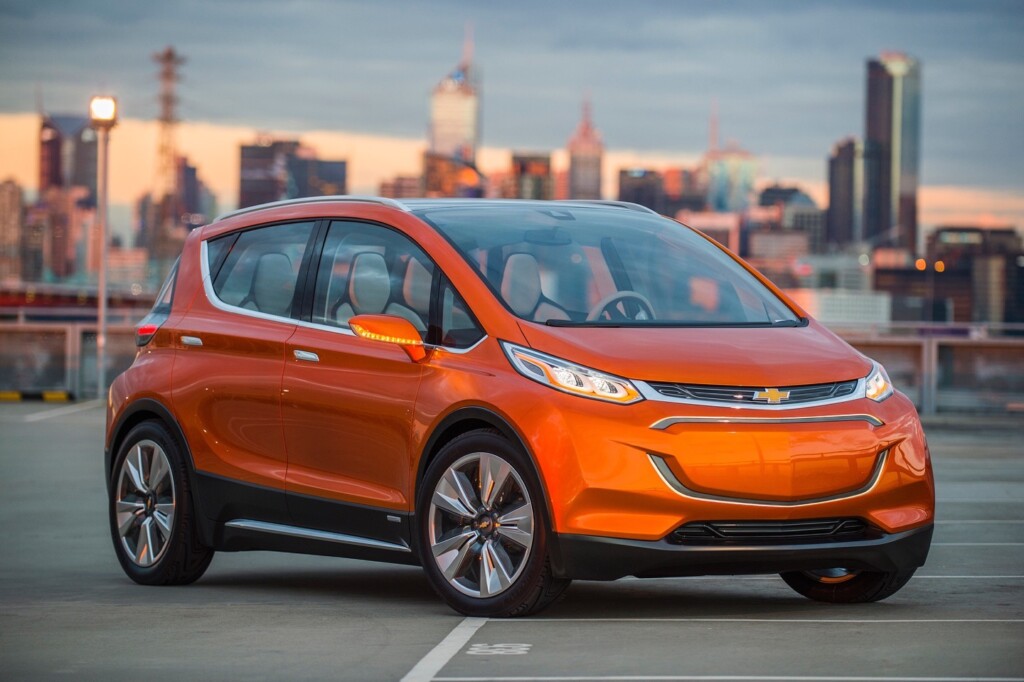
Adaptive cruise control versus the phantom curse: Ford’s demo
Three lanes of 12 vehicles each were tested on a closed high-speed oval simulating a highway. The lead vehicles in each lane slowed from 60 to 40 mph to mimic a traffic disturbance. Without the ACC technology, the drivers each braked harder than the vehicle ahead, which led to a braking wave that became more pronounced further down the traffic stream. In other words, the non-ACC drivers amplified the initial braking event, in some cases to the point where traffic slowed to a crawl.
The demonstration was repeated with all vehicles using adaptive cruise control set at 62 mph, just slightly higher than the lead vehicles to ensure the vehicles remained in a constant platoon. In these demonstrations, the ACC systems outperformed the human drivers in almost every braking situation.
In one run, the ACC actually suppressed the braking wave so the last car in the lane only slowed by 5 mph instead of coming to a stand-still.
“The fact that we saw a commercially-viable ACC system fully suppress the traffic backup is quite impressive,” Work said. “And while we know this won’t happen in every situation or in every circumstance, it’s very promising to see that commercially available ACC systems can already have a desired effect in normal, everyday driving scenarios.”
The team also reduced the number of ACC active vehicles to 33 percent. This is the low threshold researchers have long believed could help suppress phantom traffic backups. The results were similar to the full ACC demonstrations.
“Adaptive cruise control systems don’t get tired or distracted, they’re consistently looking at the vehicle ahead,” said Kane. “Plus, they are programmed to provide more consistent distances between vehicles so they can better respond to the speed and distance of the vehicle ahead.”
According to Work, while the automated systems can function with greater consistency, humans still have one big advantage over the machine systems: their ability to see one or more vehicles ahead, which enables them to be more precise in their response to traffic slow-downs.
“The big takeaway from all of this is it’s to everyone’s benefit to practice good driving. Give ample space between you and the vehicle ahead, stay alert and that will always help traffic flow more smoothly, and help us all get to our destinations on time,” Kane said.
Other posts by Mark Leo

